Learn how to smoke pulled pork on a Pit Boss pellet grill following our detailed instructions and recipe below!
This is an easy, yet really fun dish to prepare to feed a crowd, especially on a Pit Boss, but it can also easily be adapted for ANY pellet grill.
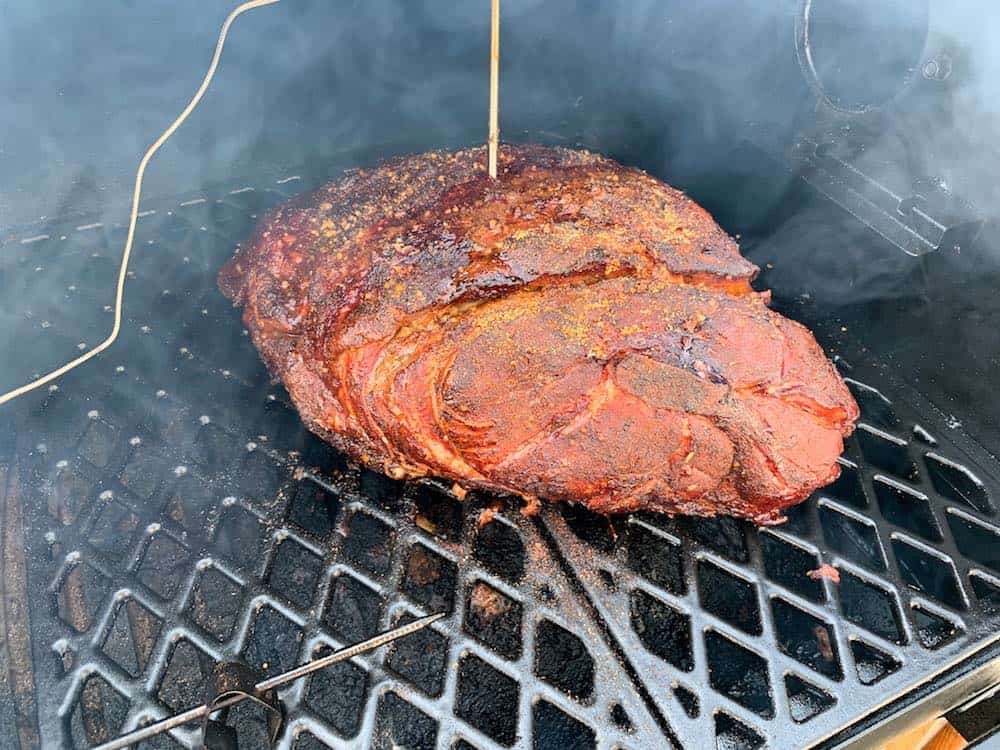
Pulled pork is a great main dish to serve for a crowd, as even a smaller pork shoulder makes a lot of meat. We take you through how to season and smoke the pork so it is both flavorful and moist.
Jump to:
- Pork Shoulder, Boston Butt, or Pulled Pork?
- Choosing the Best Size
- Video
- Prepare the Pork Shoulder
- Trim the Fat
- Apply the Rub
- Marinade Injections
- The Best Wood Pellets
- Setting Up the Pit Boss
- Equipment
- Ingredients
- Cooking Time
- The Texas Crutch
- Target Internal Temperature
- How to Pull the Pork
- Serve and Enjoy!
- 📖 Recipe
Pork Shoulder, Boston Butt, or Pulled Pork?
A Boston butt, better known as a pork butt or pork shoulder, is a pork cut that comes from the upper shoulder of the pig, and is most commonly used to make pulled pork.
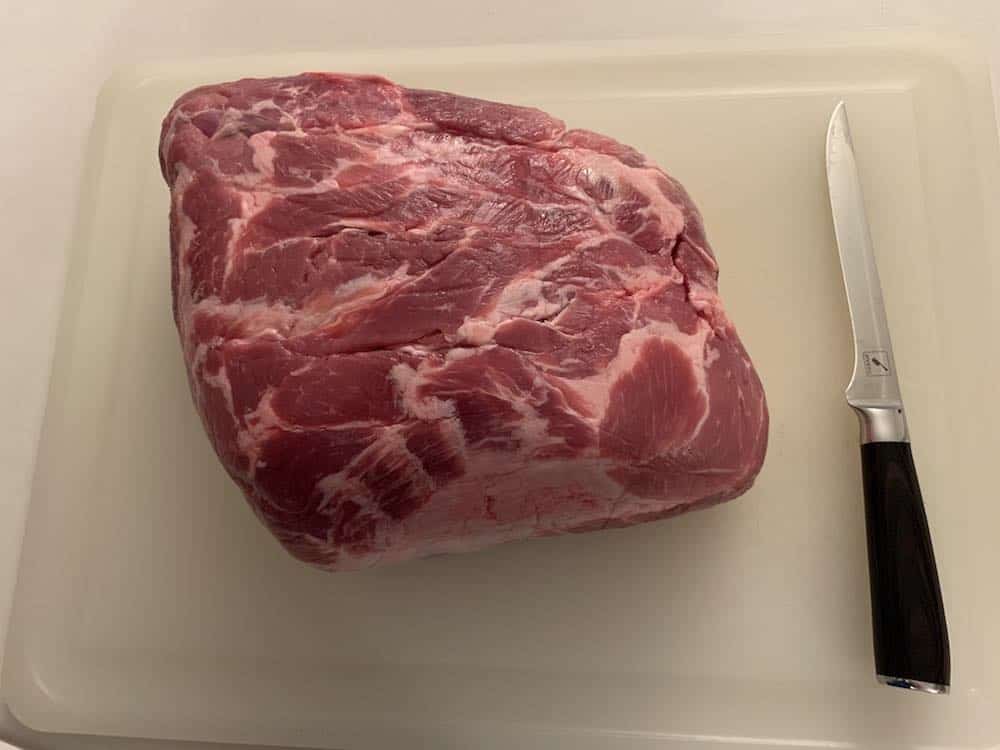
The confusing name comes from the barrels in which they were transported during the 18th century, known as butts (from the Latin “buttis” meaning barrel or casket).
They were actually considered cheap cuts of meat and stuffed into barrels for easy bulk transportation.
Nowadays, pulled pork from Boston butts can be found not only in traditional American bbq, but all around the world.
You will find pulled pork in dishes ranging from Mexican carnitas, to Latino lechón asado and Chinese char siu.
Choosing the Best Size
Depending on the Pit Boss model you are using, and whether you will need the second shelf available for a side dish like smoked sweet potatoes or asparagus, you will need to think about what size pork shoulder you need for your Pit Boss pulled pork.
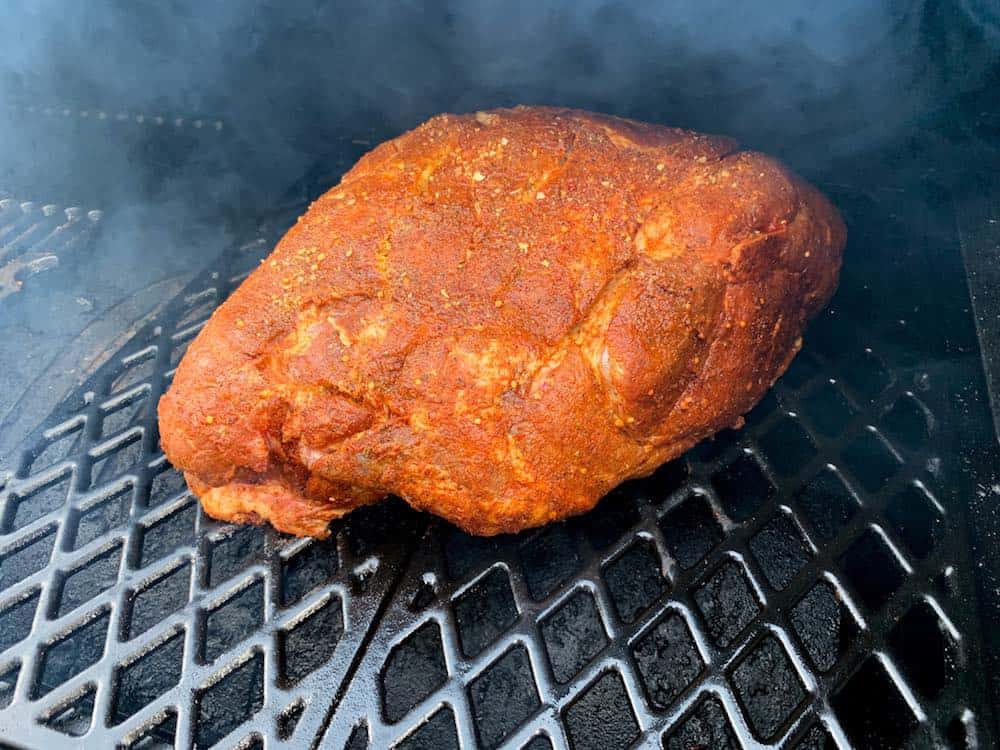
Make sure to not only consider the grilling area of the Pit Boss, but the height available under the second rack if you can't simply remove it.
Also, contrary to popular opinion in some BBQ circles, bigger ISN'T always better.
Think about it.
The larger the pork shoulder, the longer it takes to cook, and the less surface area you have relative to interior meat after you pull it.
And the surface is where the rub and all the flavor is!
In many cases, you are better off smoking (2) 4-6 lb pork shoulders for pulled pork rather than one monster 8-12 lb one.
You get done cooking that much faster, which means less time for the meat to risk drying out, and you have more crusty barky surface area mixed in with the rest of your meat!
The smoke from your wood pellets will also only adhere to very outer surface of the meat, so if you want maximum smokey flavor, you want more surface area, and are better off with multiple smaller cuts.
IF... you can only find monster 10-14 pounders, go ahead and get one and just cut it in half when you get home!
Video
Rather Watch than Read?
Check out our video for How to Make Smoked Pulled Pork on a Pit Boss Pellet Grill over on our Youtube Channel!
Prepare the Pork Shoulder
You can think of the process of smoking pulled pork split into two parts.
- The first part is preparing your meat for the Pit Boss pellet grill.
- The second part is setting up and smoking the meat and then pulling it when it is done
You have literally a million options for seasoning and preparing your pulled pork depending on the flavor profile you are going after.
You can use anything from a traditional American BBQ rub to something more exotic or internationally flavored such as a spicy chipotle rub or maybe something asian inspired.
Trim the Fat
First, you will want to trim any excess fat off the pork shoulder before applying your rub.
This will help the rub stick to and penetrate the meat itself rather than being obstructed by the fat.
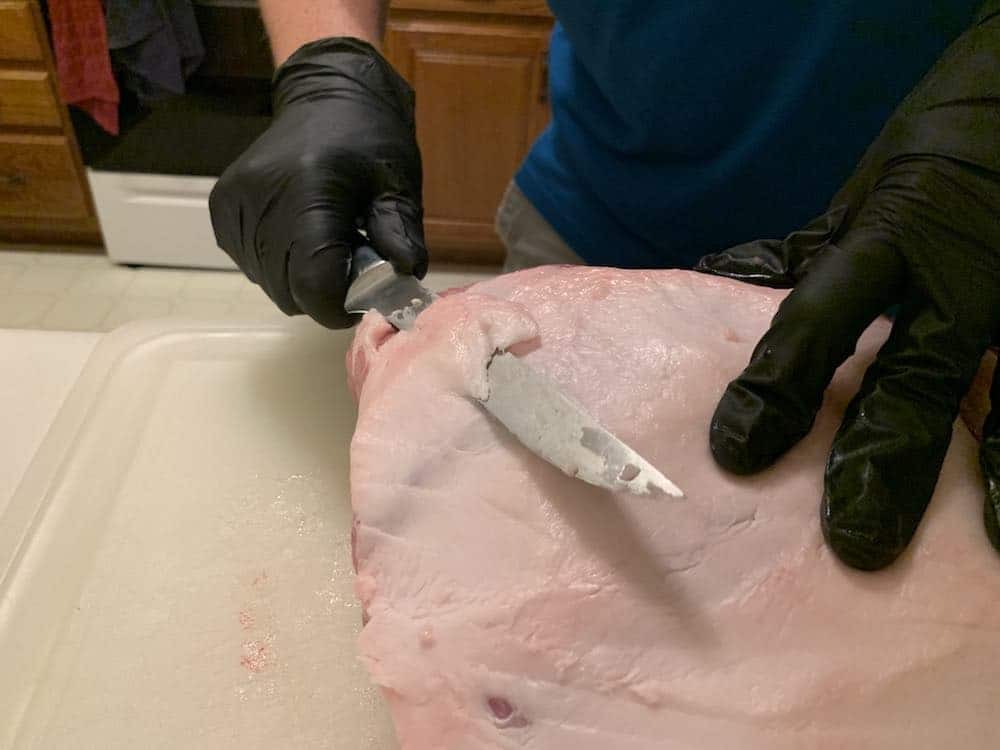
Leaving a little fat is ok.
You'll notice one side will have a thicker "Fat Cap" on it.
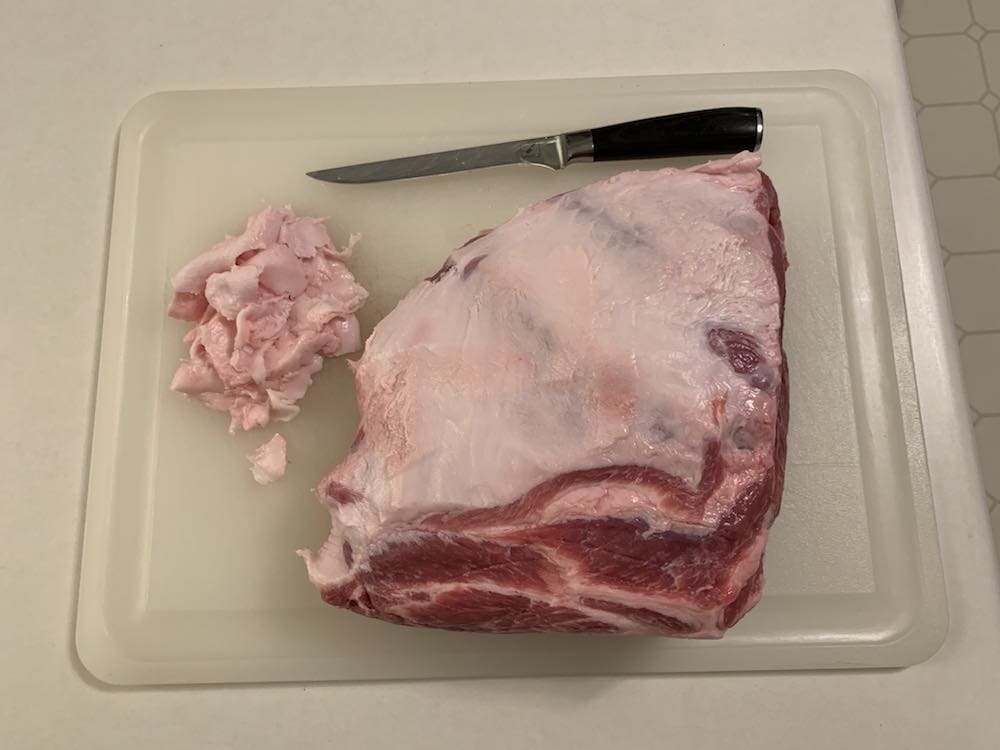
It's ok to leave some of this in place but ideally trim it down to no more than about ¼ inch of thickness.
After trimming, score through the fat cap with a good meat cutting knife, such as a good boning knife, in 2 perpendicular directions to help the fat underneath render out during the smoking process and allow some more of the rub to penetrate the meat.
If you've followed us for any amount of time you know we LOVE the meat melting boning knives from Imarku.
Apply the Rub
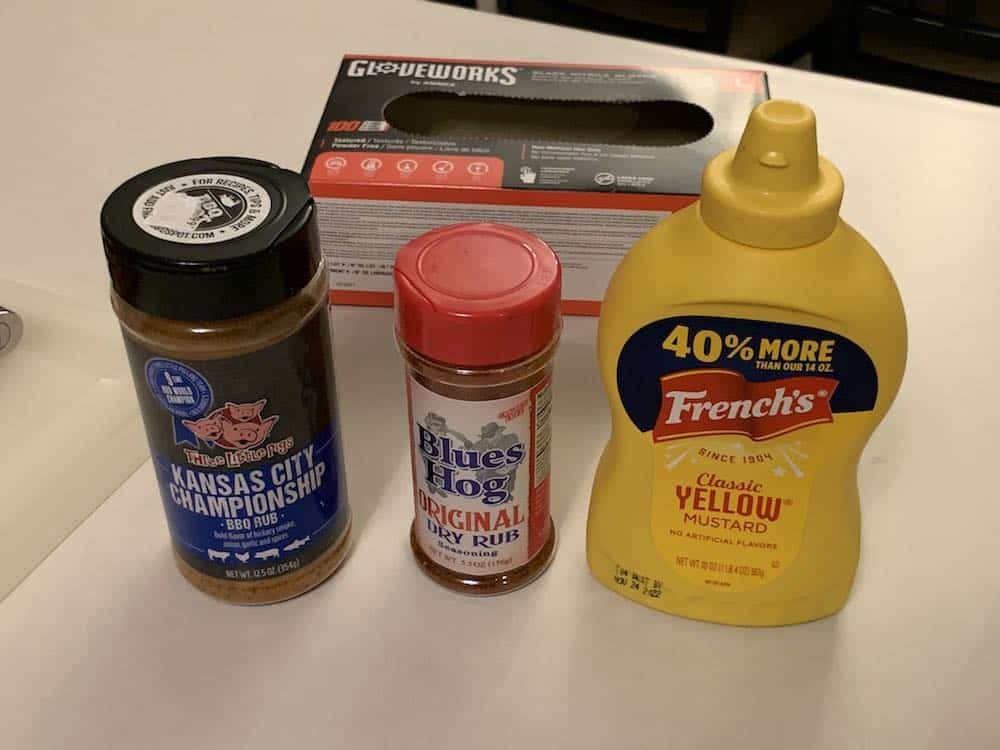
Like we said, you can have fun finding any new and innovative rub you would like to use.
Conventional American BBQ rubs have a lot of sugar in them as that is what helps form the crusty bark on the exterior of the pork shoulder as it cooks in the smoker.
Because we are going to set the Pit Boss pellet grill to only 250°F, you don't need to worry about the sugar burning.
After trimming the fat, cover the pork in a thin layer of cooking oil or yellow mustard.
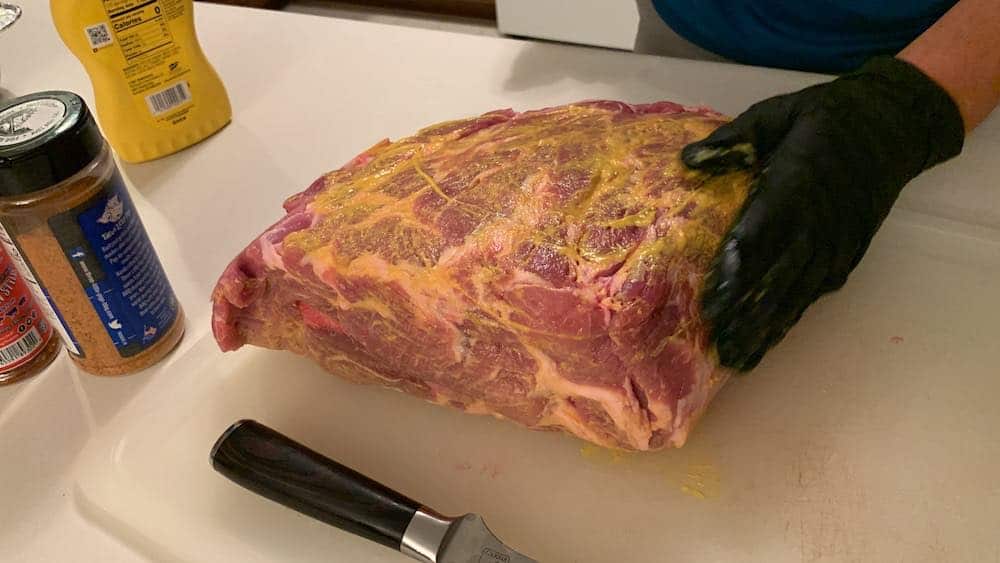
Yes, you read that right, many professional barbecue chefs use yellow mustard to help their rub emulsify and stick to the meat when preparing pork butts, brisket, or even baby back ribs.
After the long cook you won't taste any mustard flavor, trust us.
Be generous with the amount of rub you put on.
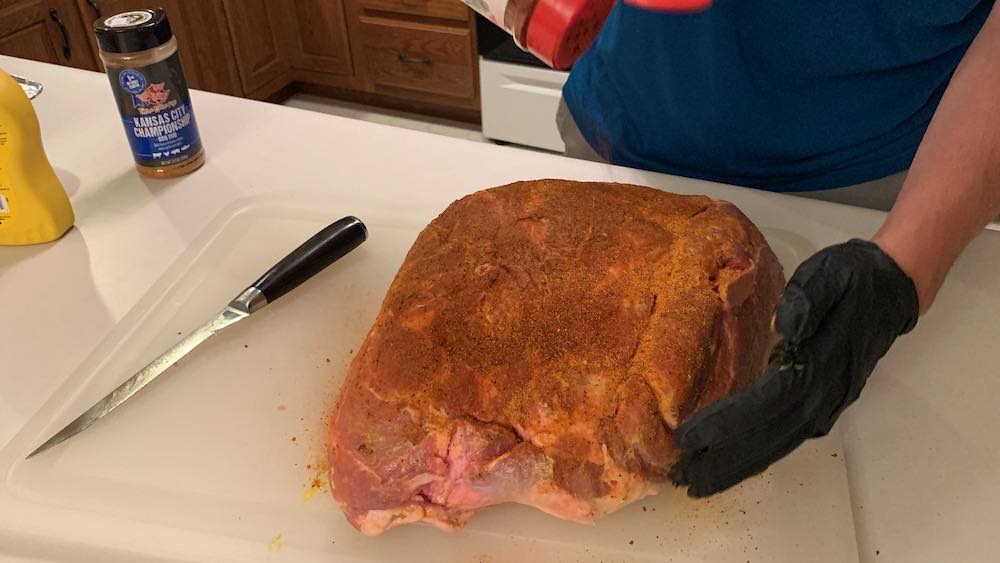
Then, you can wrap the pork butt in plastic wrap and put it back in the refrigerator until you are ready to smoke it.
This can even be done the night before to save some time the next day and to let the salt in the rub fully penetrate the meat.
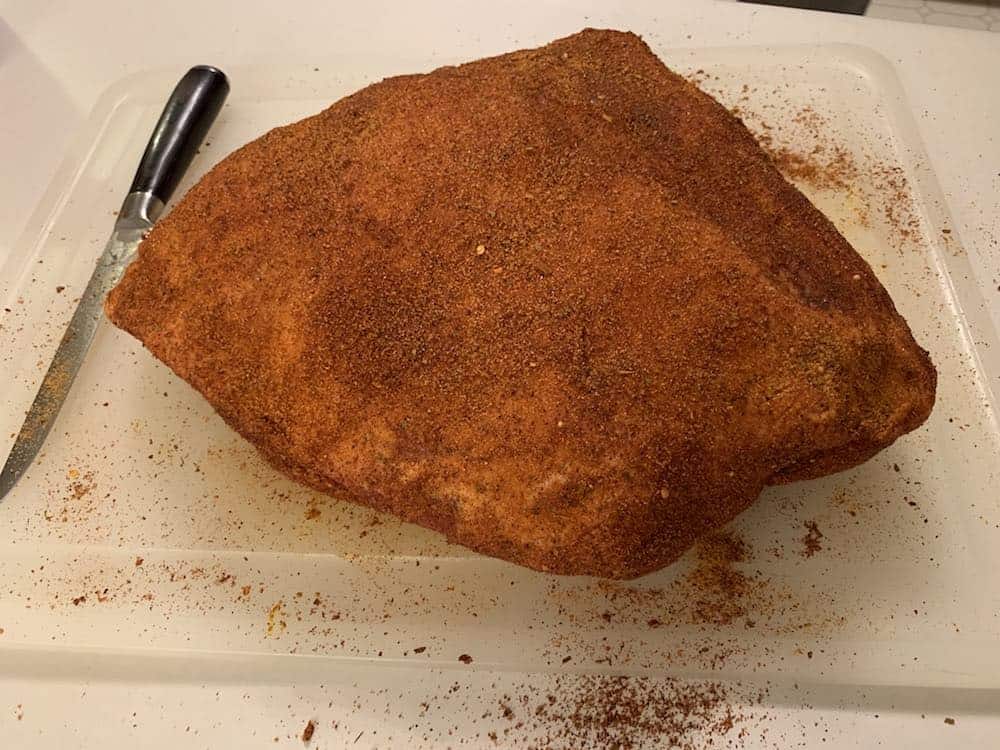
We have a simple recipe below for a good pork bbq rub, or, if you prefer to buy your own, you know we are big fans of Blues Hog Dry Rub Seasoning.
- From the Award-Winning, Choice of Champi
Marinade Injections
For additional flavor, some bbq cooks like to inject their pork shoulder with a marinade before putting it on the Pit Boss.
The idea is to add flavor and moisture deep into the meat to help season the bland interior of the pork while its cooking.
There Is nothing wrong with injecting, and we LOVE to injected SLICED meats like smoked roast beef, ham, and turkey.
The only problem, is it adds water weight and significantly extra time to your cook.
By adding 8 oz of injection you may be increasing your pulled pork cooking time by 1 HOUR or more.
And think about it, when the pork butt comes out of the Pit Boss pellet smoker, you are going to be pulling it apart in a big tray, and adding more seasoning at that point too.
So why go through the hassle of injecting the interior if you are going to be adding seasoning later anyways?
Injections work great on sliced meats like the ones mentioned above because you are slicing and serving and wanting the slices of meat to have flavor all the way through.
But with pulled meat like Pit Boss smoked pulled pork, skip the hassle and add your seasoning at the end!
If you REALLY want to inject your Boston butt or any other type of meat, always use a good quality meat injector like this one from JY COOKMENT.
You can use a mixture of apple juice, apple cider vinegar, salt, sugar, and some of your favorite BBQ rub mixed together.
- JY COOKMENT’s meat injector is made of 304 food-grade stainless steel. BPA-freesilicone o-rings for spare replacement. Keep your family safe and healt
The Best Wood Pellets
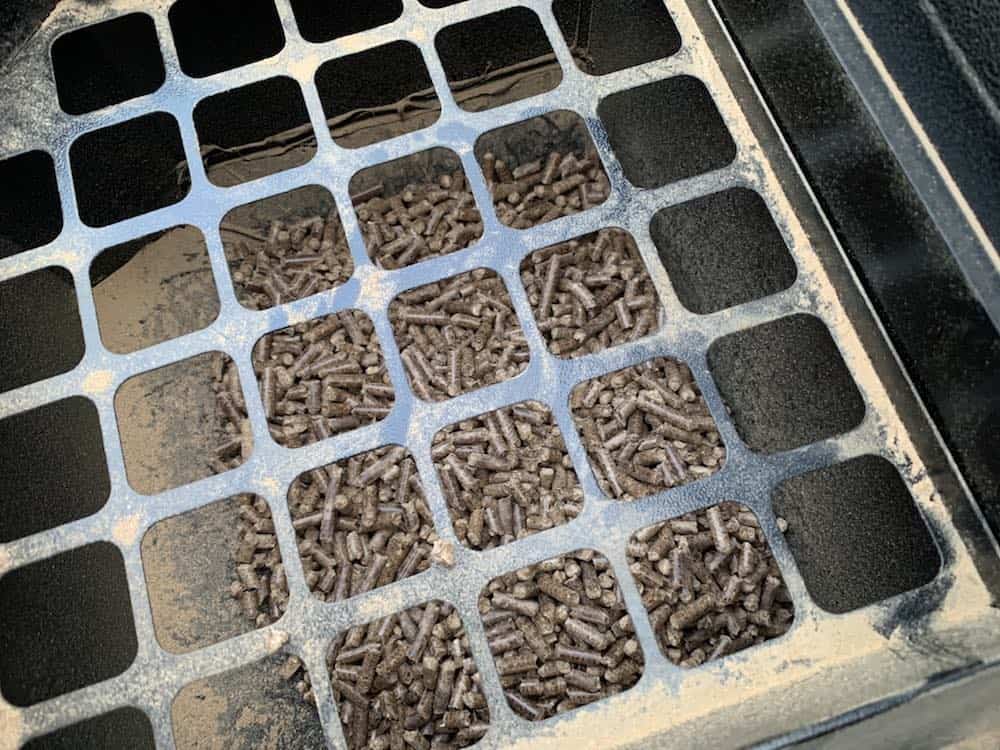
You have a lot of options when it comes to choosing the right wood pellets to smoke your pulled pork on a Pit Boss pellet grill.
In fact, we went DEEP in depth on our favorite smoking woods for pulled pork HERE if you want to read more on the topic.
Most smoking wood pellets are fair game to some degree, however, mesquite will give a very aggressive smoke flavor to the pork, usually a little too much if used solely on its own rather than mixed in lightly with a milder fruitwood.
Save the mesquite for quicker smoking sessions on your steaks, lobster, and even smoked crab legs where it doesn't have time to overpower the protein.
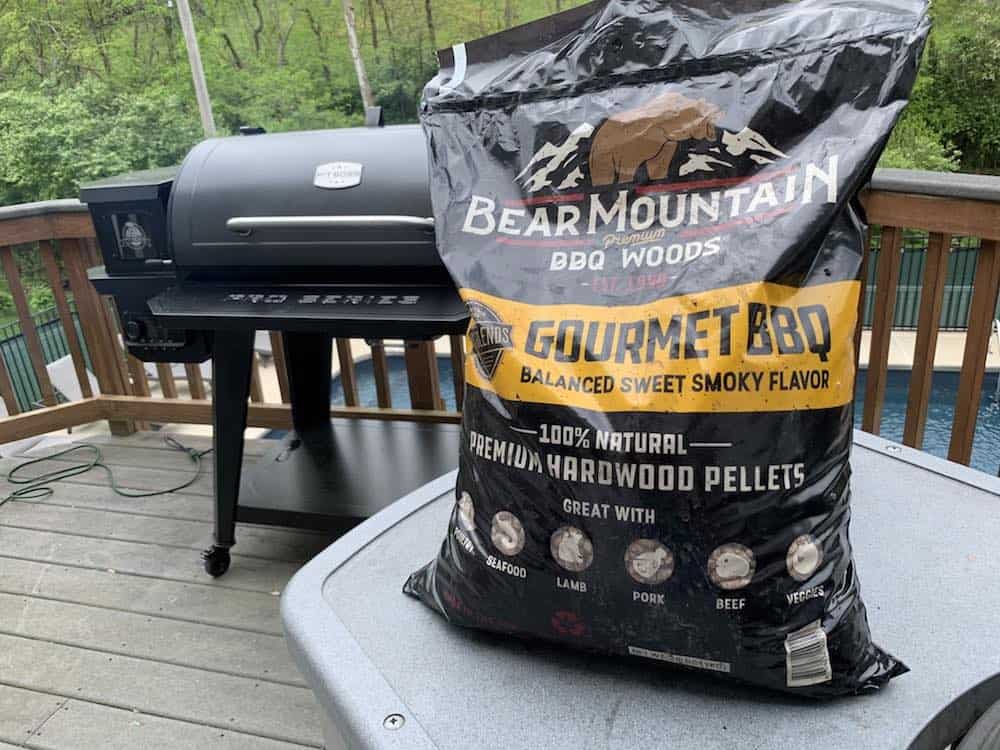
Pecan, hickory, apple, beech, alder, and cherry pellets all give great results on pulled pork when smoked on a Pit Boss.
For a very straightforward flavor, we are also big fans of Bear Mountain Cherry Wood Pellets on pork.
- MILD CHERRY FLAVOR: Cherry BBQ pellets add a fruity, smoky flavor to your favorite red meat, fish, lamb, or pork dish
- ALL-NATURAL HARDWOODS: Made from 100% all-natural hardwoods with no flavorings, fillers, or additives
- USE WITH MULTIPLE GRILL TYPES: Ideal for all outdoor pellet grills, smokers, gas, charcoal, and electric grills
For the best results, store your unused pellets in a sealed room temperature container like this 20 lb pellet container rather than in the Pit Boss hopper outside.
Pellets do not last forever, but will definitely last a LOT longer if stored indoors in a quality airtight container.
- Store up to 20 pounds of hardwood pellets in the heavy-duty plastic pellet bucket.
- Weatherproof, airtight lid protects pellets from the elements, keeping them fresh and dry
- Wire-mesh filter separates wood dust from the pellets for a clean burn
- Heavy-duty plastic scoop to easily transfer pellets
Looking to for even more smoke flavor? Check out How to Get More Smoke Flavor on a Pellet Grill for step by step instructions on setting up a firebox using charcoal and real wood chunks.
Setting Up the Pit Boss
The pork shoulder is a cut of meat that provides a variety of options, and for our purposes, is quite easy to smoke, especially on a Pit Boss pellet grill
We have previously covered how to season a Pit Boss, how to start a Pit Boss, as well as how to troubleshoot the smoke level of your pellet grill.
So if you need a good overview on how to use your Pit Boss for the first time, check those articles out first!
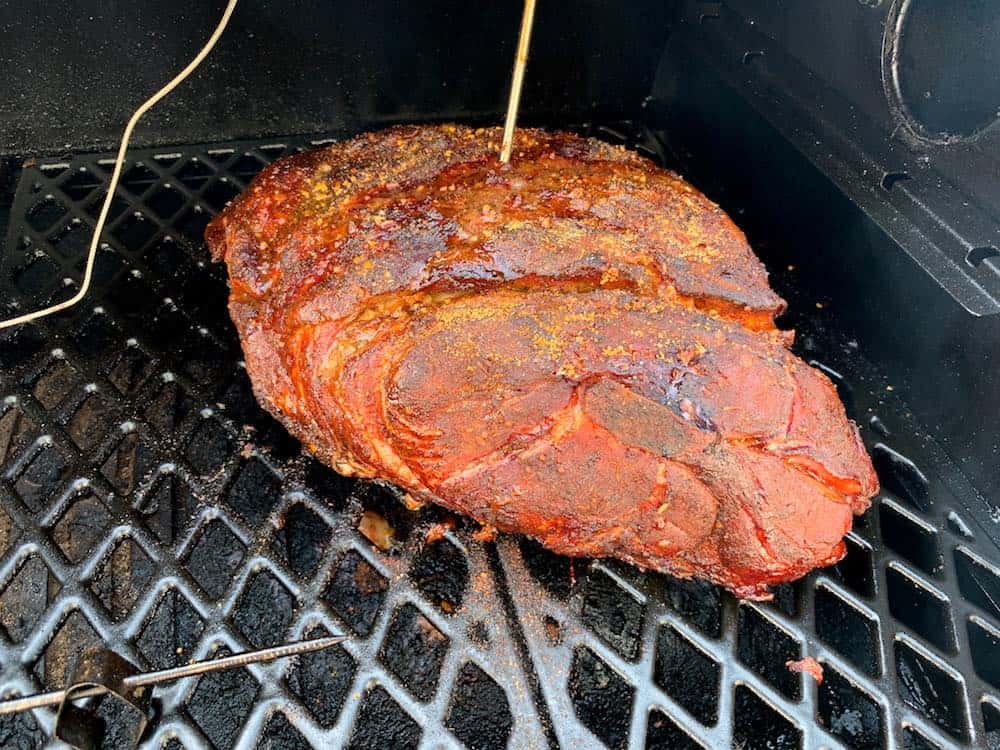
Equipment
- A large piece of foil to cover the meat
- Cutting board
- Knife
- Wood pellets
- Brush or spray bottle (preferably the latter)
- Large forks or a proper pair of grilling tongs
- Meat thermometer
- Pit Boss pellet grill
Ingredients
- 4 tablespoons of brown sugar
- 3 tablespoons of salt
- 3 tablespoons of paprika
- 1 teaspoon of cayenne
- 1 tablespoons of onion powder
- 1 tablespoons of garlic powder
- 2 tablespoons of ground black pepper
- 5-8 lb pork shoulder
- Apple juice or Cola
- Apple cider vinegar
- a 8-14 lb bone in pork butt
Cooking Time
At 250°F, it will take roughly 1.5 hours per lb to fully cook a bone-in pork butt.
So a 6 lb pork shoulder may take about 9 hours.
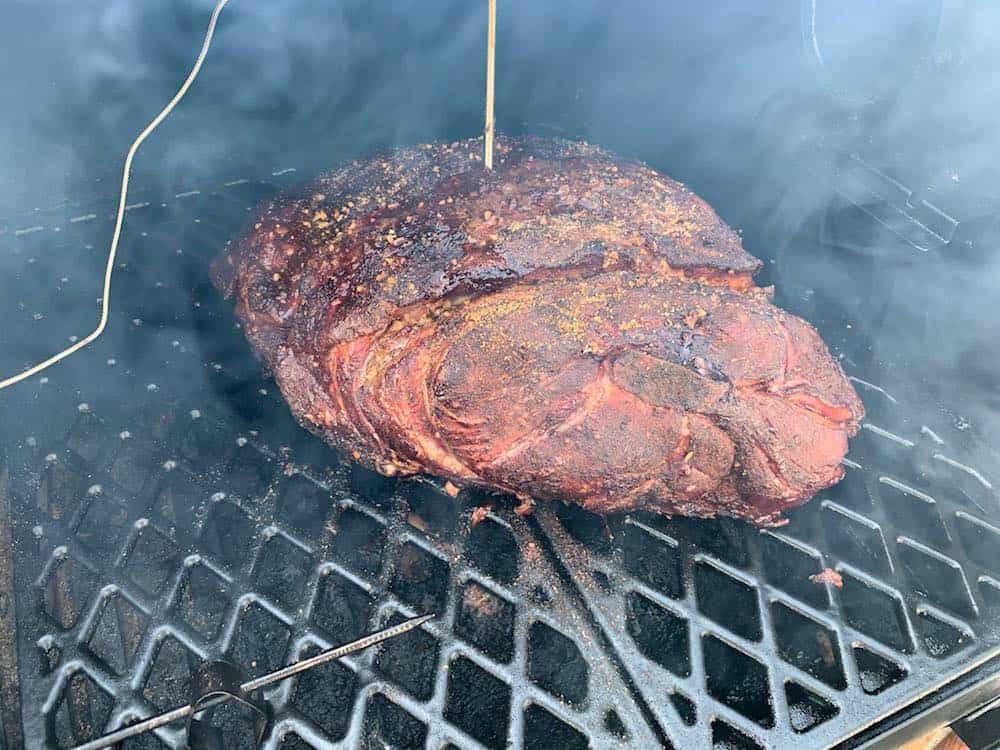
Now, you can speed up the cook a little by increasing your cooking temperature to 275°F. It will still be delicious, albeit maybe a little tougher around the exterior.
Make sure to use a good temperature probe to keep track of your meat's temperature while it is cooking.
We are big fans of this one from ThermoPro.
- Professional digital meat thermometer with timer mode and colored light system for party festival holiday to show your perfect culinary skill
- Smoker food thermometer with count-up and countdown timer ability up to 23 hours, 59 minutes to monitor both cooking temperature and time, so you never overcook your food
While we have used and recommended ThermoPro for years, lately we have also become big fans of the MEATER leave in thermometer.
It is extremely accurate and has an incredible 165 foot bluetooth range and works right with your smartphone so you don't need to carry a separate controller around with you like many other remote thermometers require.
It's got a great free app that is constantly being updated and even has an algorithm to predict how much longer your type of meat will take to cook based on cooking temperature, target temperature, current internal temperature.
It's like a GPS for your meat!
- ► 2 Sensors, 1 Probe: Dual temperature sensors can monitor internal meat temperature up to 212°F and ambient / external temperature up to 527°F simultaneously. Dishwasher safe.
- ► Advanced Estimator Algorithm: Can estimate how long to cook and rest your food to help plan your meal and manage your time.
- ► Connectivity Suite: Monitor your cook from a phone or tablet over Bluetooth. Extend your range Using MEATER Link WiFi and MEATER Cloud to use Alexa and monitor your cook from a computer.
You are going to leave your pork shoulder on the Pit Boss until it hits somewhere between 197-203°F when measured with a probe or instant thermometer.
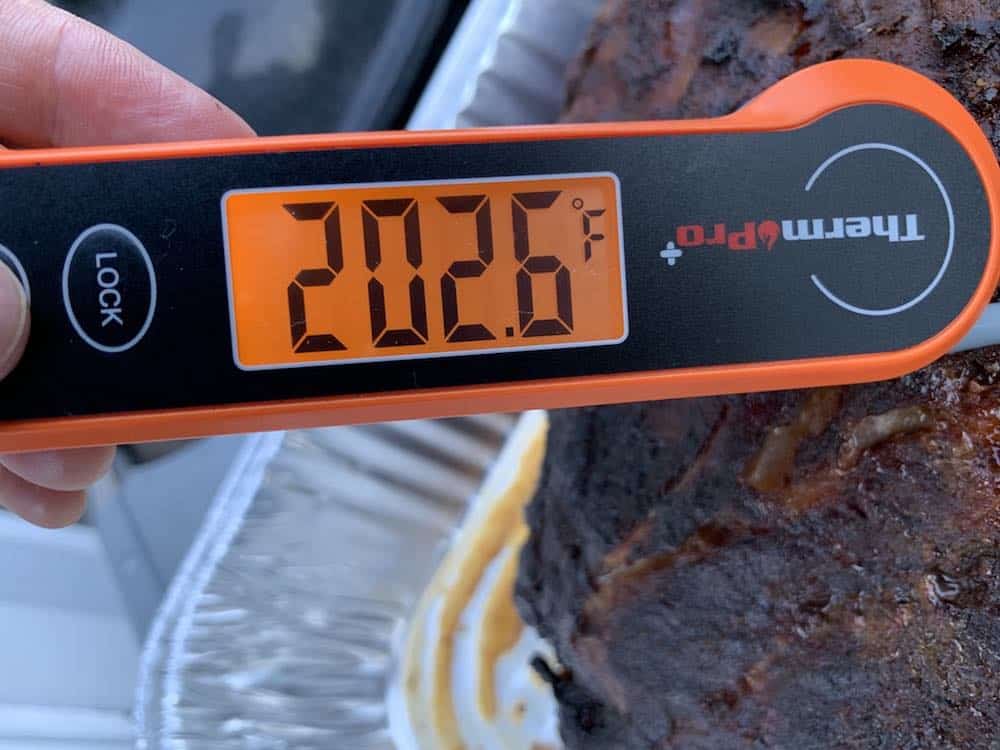
Don't rush it.
It will not be fall apart tender or pull well even if you take it off at 180°F.
165-180°F is a great temperature range for SLICING pork, but if you want it fall apart tender and easy to pull, leave it on until it hits 197-203°F.
Got it?
The Texas Crutch
Another way to speed up your cooking time is by using a tried and tested barbecue technique known as the "Texas Crutch".
Cool name, but don't worry, it's not complicated.
You see, when big pieces of meat like brisket or pork butt are being cooked low and slow, and hit about 150°F internally, they tend to "stall out" and stop rising in temperature.
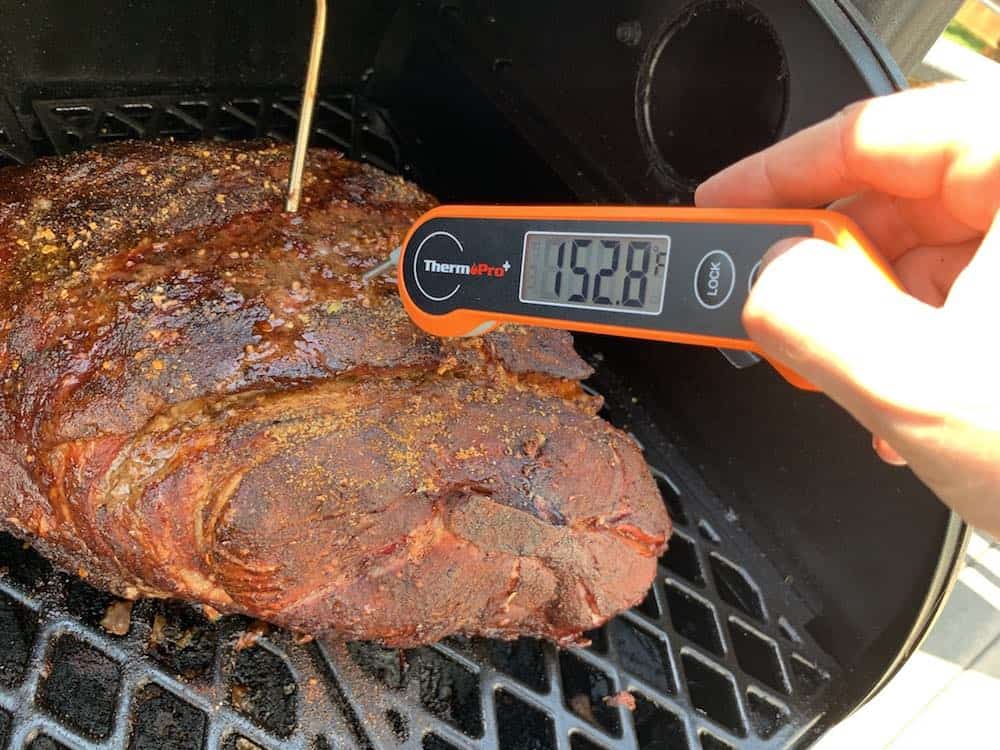
Sometimes for HOURS depending on the size of the meat.
This can be maddening if your guests are arriving soon and the internal temperature needs to rise another 50°F and hasn't budged for over an hour.
Without getting too much into the science behind why this happens, just understand it has to do with a lot of trapped moisture evaporating at this temperature and continually cooling your meat as it evaporates.
One way to "power through the stall" is to take your pork butt out of the Pit Boss when it hits 150°F, and double or triple wrap it tightly in aluminum foil.
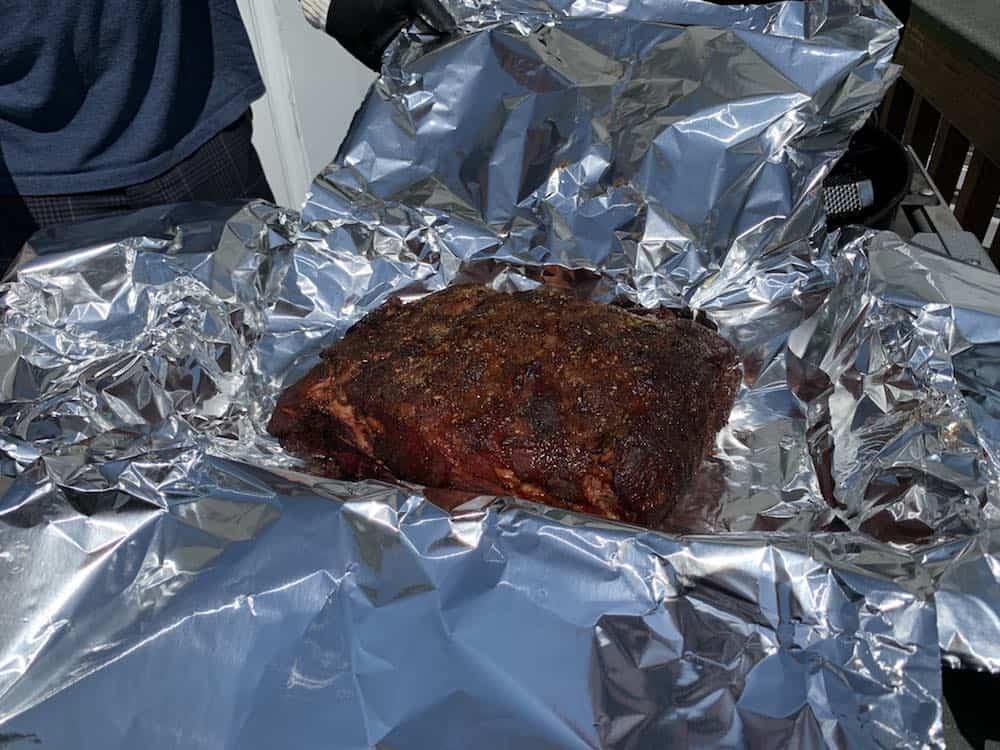
Then replace your thermometer, place the meat back on the Pit Boss, and let it continue to cook.

The aluminum foil will keep the moisture from evaporating, possibly keeping your meat from drying out as much while to cooks, and most importantly, let it continue to steadily rise in temperature.
Target Internal Temperature
Leave it wrapped until it gets to your target temperature range of 197°-203°F and then remove it from the smoker.
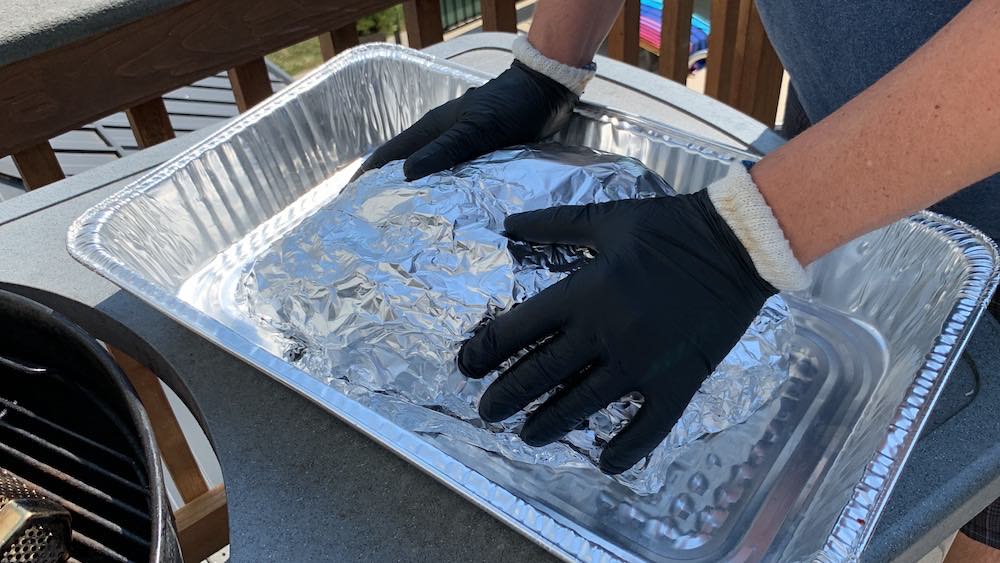
Unwrap the Boston butt and let it rest for about 20-30 minutes before pulling it.
If you want to firm the bark back up before pulling, take it out of the aluminum foil at 197-203°F and place it back on the Pit Boss UNWRAPPED for another 30-40 minutes.
It will likely drop in temperature after you unwrap it but this is OK, as long as you hit that 197-203°F range before unwrapping.
If this technique looks familiar, its because its very similar to how we firm our 3-2-1 pork ribs back up after removing them from foil too.
Pro Tip: We like combining insulated cloth liner gloves with black disposable BBQ gloves over them much like the BBQ competition cooks use to protect their hands and limit constant hand washing or fumbling with BBQ tongs and spatulas when handling large pork shoulders or briskets in their smokers.
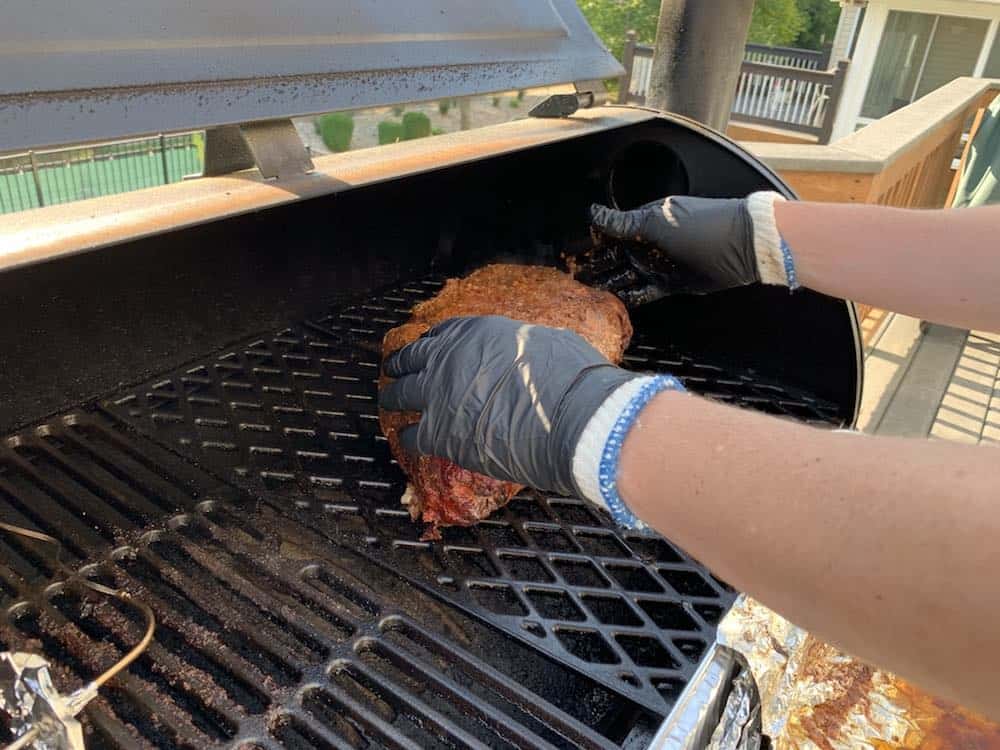
Make sure to use a good instant read thermometer like our favorite from ThermoPro to spot check multiple places on the pork butt for doneness.
Sometimes the leave in probe will be in a pocket of fat that is COOLER than the rest of the meat.
Or conversely, the probe may be too near the bone which will be HOTTER than the rest fo the meat.
This is why it's important to check multiple spots on the pork butt. This will also inform you of how evenly it is cooking and how often you may need to flip and/or rotate it on your Pit Boss during the cooking process.
- 2.0 inches large auto-rotating backlit display: Meat thermometers for grilling has a 180° auto-rotating backlit display, making this kitchen thermometer perfect for left-hand users and allows you to use it in low light conditi
How to Pull the Pork
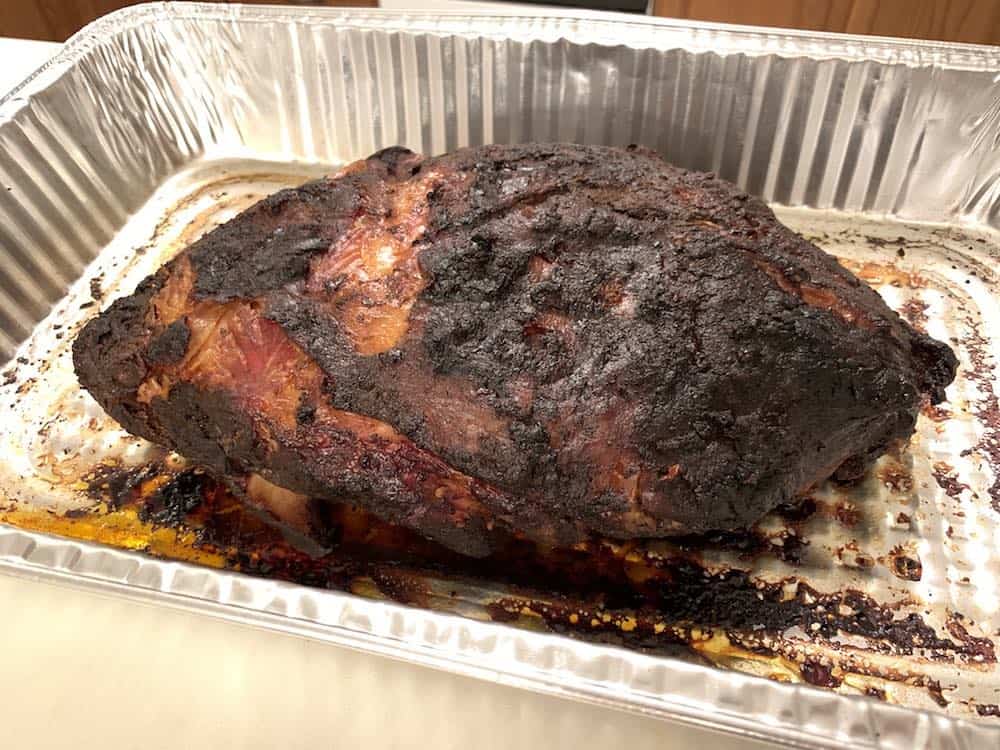
Once you've removed the pork butt from the Pit Boss pellet grill and you have let it rest in an aluminum pan for about 20-30 minutes, it's time to pull that meat!
You can use 2 forks, or better yet a pair of BBQ Bear Claws to make the job even faster (and fun)!
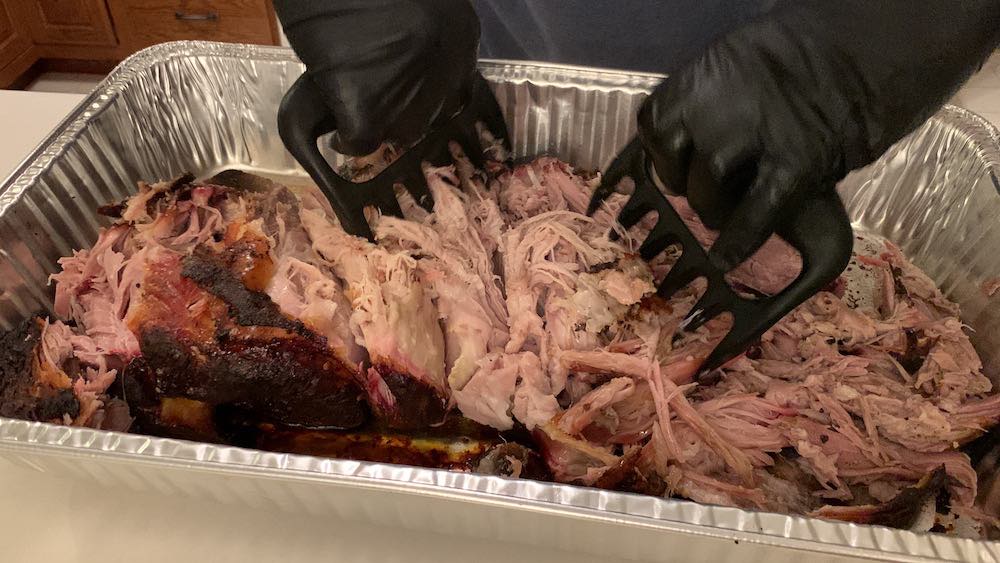
Once you have pulled the meat, test it for seasoning, you likely need to add some salt.
Add a little salt at time, mixing it in and re-taste testing as you go.
You can also add a little apple cider vinegar and mix it in the give it some sweetness and acidity to balance out the fattiness.
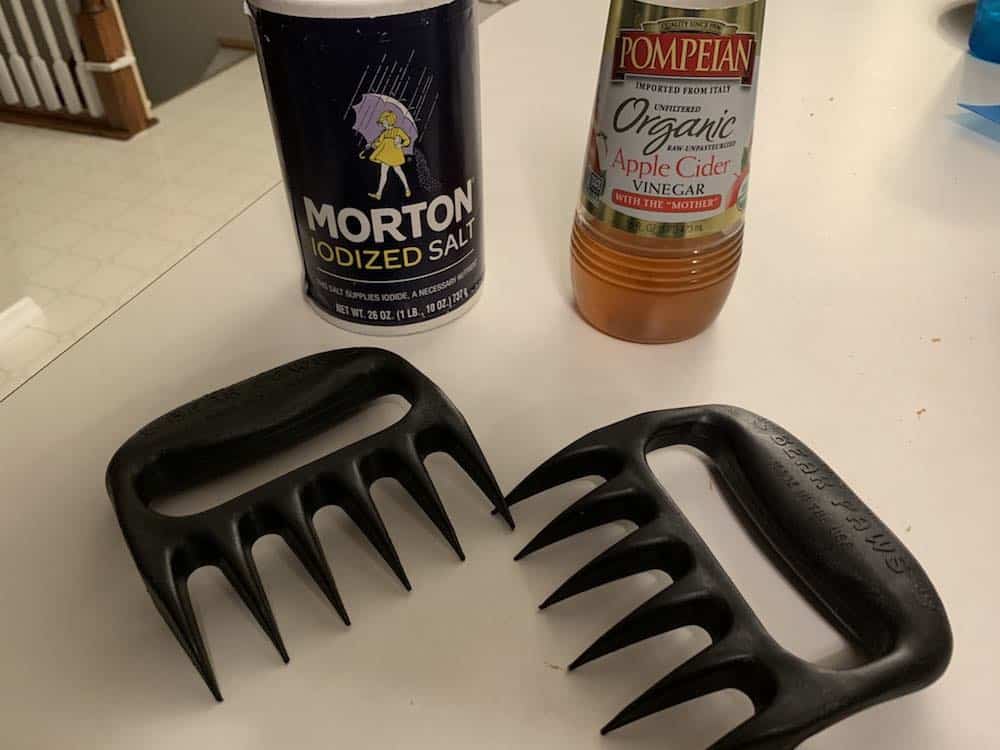
As far as sauce, our hands down favorite sauce for smoked pulled pork is Blues Hog Tennessee Red Sauce.
It has everything: spice, acid, sweetness, and gives you that truly authentic vinegary carolina pulled pork flavor that perfectly counterbalances and cuts through the rich fat and smokiness of your Pit Boss pulled pork.
Keep in mind a little goes a long way because it has SO MUCH FLAVOR.
Pro Tip: It's always best to offer BBQ sauce on the side and let your guests choose whether to add it and how much to add rather than slopping it all over your meat and possibly turning folks off.
You spent a lot of time on that meat so let them taste it first rather than dousing it in bbq sauce immediately!
Serve and Enjoy!
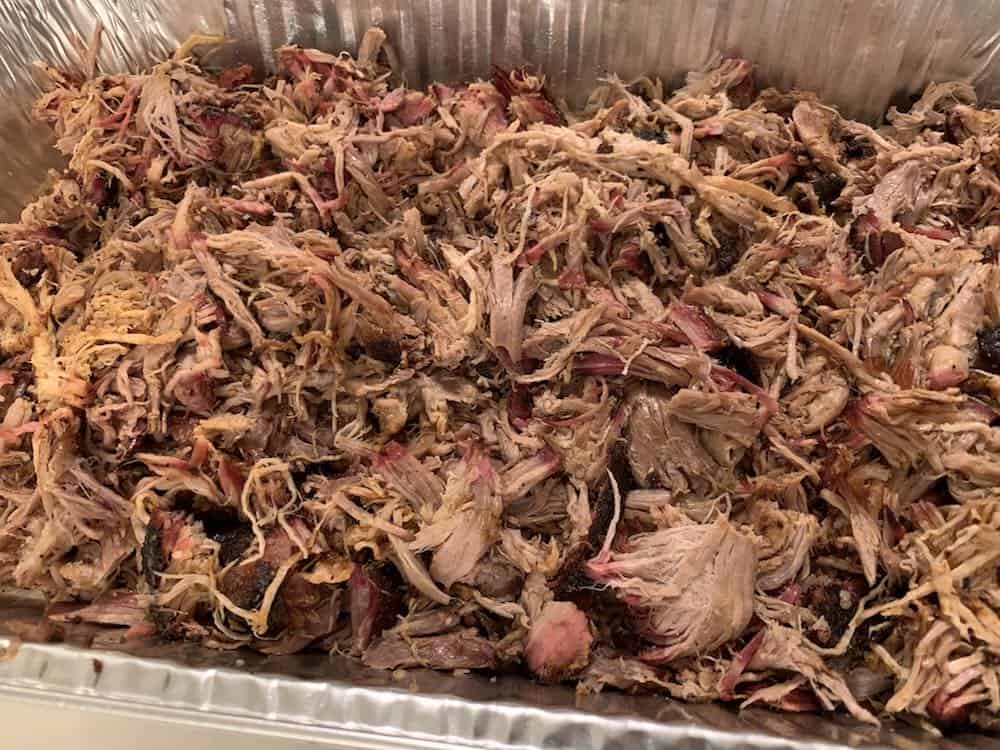
And there you have it!
Serve your Pit Boss smoked pulled pork on large brioche buns for an extra level of deliciousness.
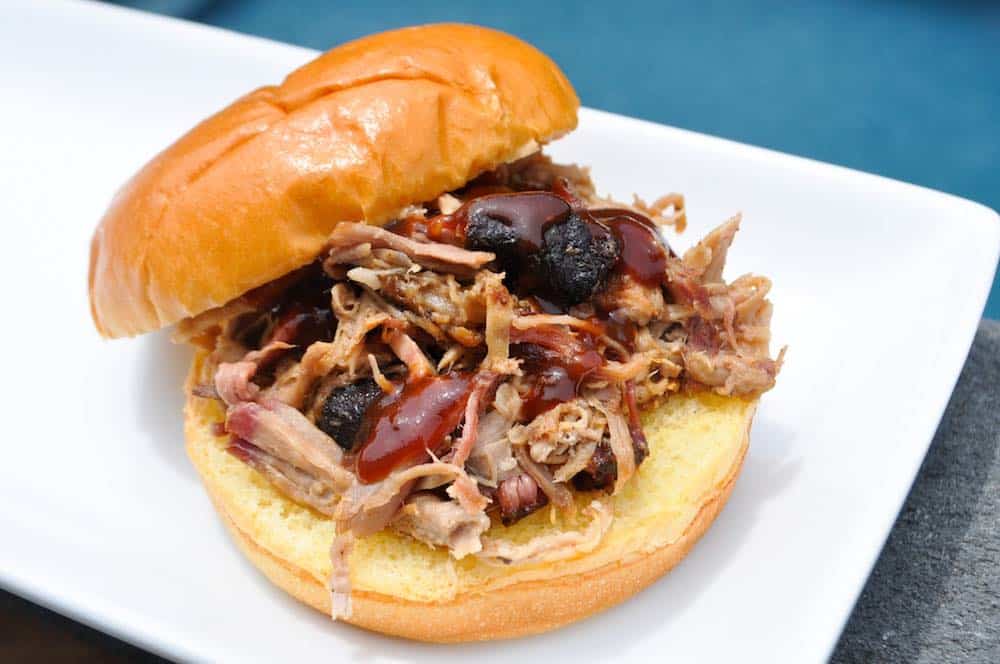
You can even top it with some vinegary coleslaw and serve along with some baked beans and corn on the cob for an authentic BBQ experience!
📖 Recipe
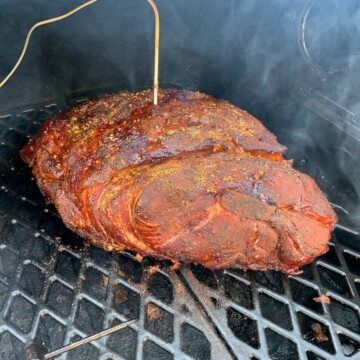
Pit Boss Smoked Pulled Pork
Equipment
- Pit Boss Pellet Grill
- Wood pellets for Pit Boss, preferably hickory, apple, and/or cherry
- Aluminum Foil Trays
- Plastic Wrap
- Internal Meat Thermometer
- Brush or spray bottle (preferably the latter)
- Heavy Duty Aluminum Foil
- Cutting Board
- Knife
- Large forks or a Pair of BBQ Bear Claws
Ingredients
- 5-8 lb Pork Shoulder Bone-In. Also sometimes labeled as a Pork Shoulder or Boston Butt.
- Olive Oil or Yellow Mustard
Mad Backyard's Pulled Pork Rub
- 4 tablespoon Brown sugar
- 3 tablespoon Salt
- 3 tablespoon Paprika
- 1 tablespoon Onion powder
- 1 tablespoon Garlic powder
- 2 tablespoon Ground black pepper
- 1 teaspoon Cayenne
Additional Ingredients
- Apple Juice or Cola in a Spray Bottle optional to spray during the cook
- Salt to taste
- Apple cider vinegar to taste
- Blues Hog Tennessee Red BBQ Sauce - OR - any vinegar based BBQ sauce for pulled pork
Instructions
Prepare the Pork Butt
- Trim any excess fat from the exterior of the pork butt. Trim the fat cap down to ¼" thickness. Score the fat cap with a meat knife in 2 directions perpendicular to each other.5-8 lb Pork Shoulder Bone-In. Also sometimes labeled as a Pork Shoulder or Boston Butt.
- In a bowl, mix all the dry ingredients. This includes the brown sugar, salt, paprika, cayenne, the onion and garlic powders and the ground black pepper. Mix it all to make the dry rub. Keep in mind you can always buy your own dry rub or use your own recipe. It’s up to you.4 tablespoon Brown sugar, 3 tablespoon Salt, 3 tablespoon Paprika, 1 teaspoon Cayenne, 1 tablespoon Onion powder, 1 tablespoon Garlic powder, 2 tablespoon Ground black pepper
- Cover your boston butt with a thin layer of olive oil or yellow mustard, then generously apply your rub to coat the entire exterior of the meat.Olive Oil or Yellow Mustard
- Wrap your boston butt in plastic wrap and place it back in the refrigerator for at least 2 hours, preferably overnight.
Start the Pit Boss
- Add your chosen pellets to the hopper, start the Pit Boss pellet grill and put it on the "Smoke" setting with the lid open.
- Once the Pit boss begins to produce thick white smoke, let it run for about 5-7 minutes until the smoke turns more of a clearish blue color. This means the fire rod has fully heated up to burn the pellets more cleanly.
- Next, set the temperature to preheat the pellet grill to 250°F.
- Fill an aluminum pan with water pan if you want to add extra moisture, and place it on the far left side of the Pit Boss pellet grill. Place a disposable bucket liner in the grease bucket as well if you want to limit cleanup later.
Smoking
- Remove the pork from the refrigerator, add any additional rub that may have come off, and once the Pit Boss is at 250°F, place the pork butt on the grate with the fat side DOWN and the thickest part facing to the hotter RIGHT side.
- Place your thermometer inside the pork making sure to not touch the bone.
- Set a timer to 3 hours and close the lid to the Pit Boss. Every hour you can optionally spray or baste the exterior of the meat with apple juice or cola to help form the bark and keep the meat moist.Apple Juice or Cola in a Spray Bottle
- Your meat will take on average 1.5 hours total to cook per pound. You can refill more wood pellets as needed, however, with a full hopper you should not need to add much more.
Texas Crutch
- When the internal temperature of the pork butt hits about 150-155°F, remove it from the Pit Boss and triple wrap it in aluminum foil. Replace the thermometer and place back in the pellet grill.
- Once the internal temperature hits 197-203°F, remove the pork from the foil and place it unwrapped back in the Pit Boss to firm the bark back up for another 30-40 minutes. You can increase the temperature up to 275°F at this time if you wish.
- Remove the pork butt from the Pit Boss and place it in an aluminum pan. Let it rest fo 20-30 minutes.
Pull and Serve
- Pull your pork using a pair or forks or Bear Claws. Discard any large pieces of fat and the bone.
- After you finish pulling and mixing, taste the pulled pork and add salt to taste, mixing as you add it in. You can also add some apple cider vinegar to taste to add some acidity.Salt to taste, Apple cider vinegar to taste
- Serve with buns and a vinegar based BBQ sauce on the side to top with like Blues Hog Tennessee Red.Blues Hog Tennessee Red BBQ Sauce - OR - any vinegar based BBQ sauce for pulled pork











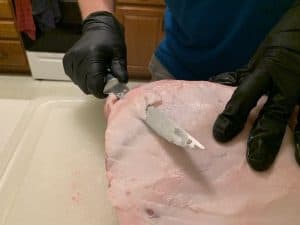
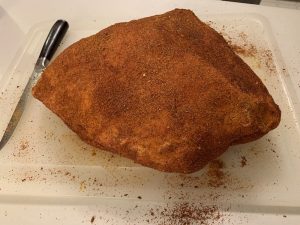
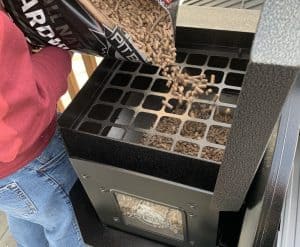
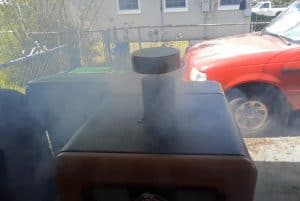
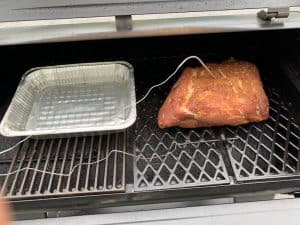
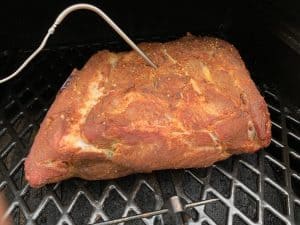
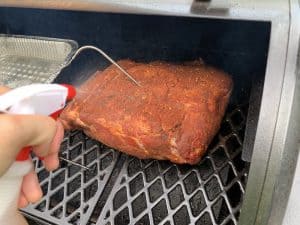
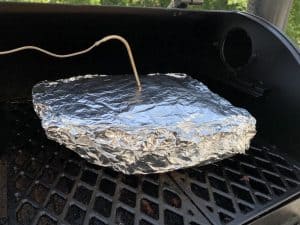
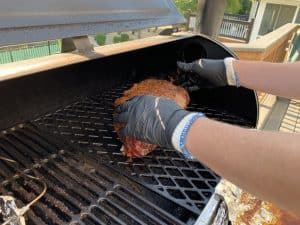
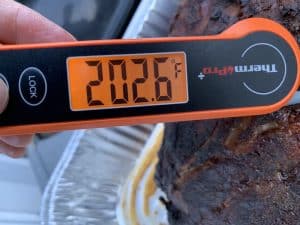
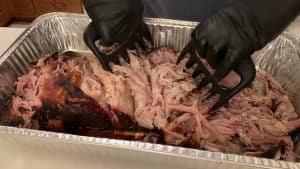
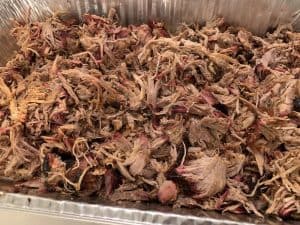
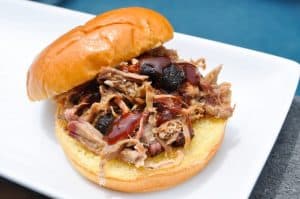
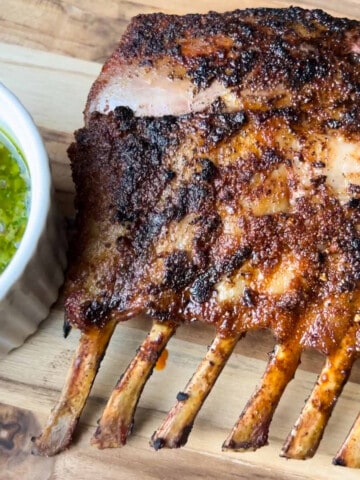
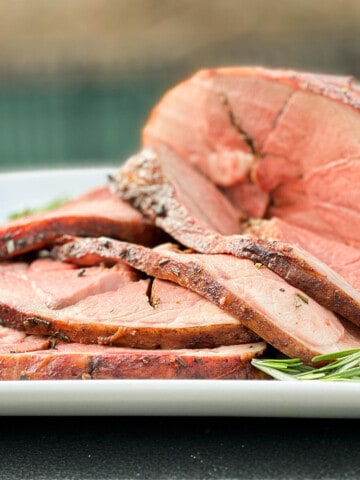
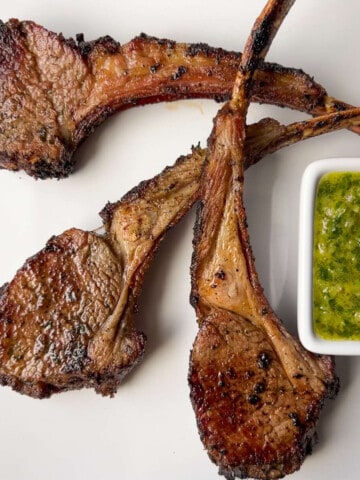
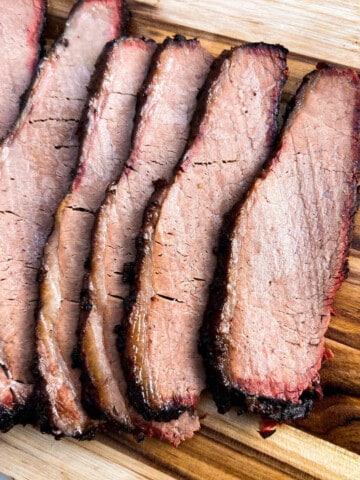
Chuck Aaron says
This came out great! Thanks for the step by step instructions for us "old guys". :-). Will have to check out that Blues Hog Sauce for the next one
Bev says
Exactly what I was looking for, came out really good, thanks for sharing!
Philip says
Great recipe and results 👌
Mads Martigan says
Thanks Philip! Glad it turned out well!